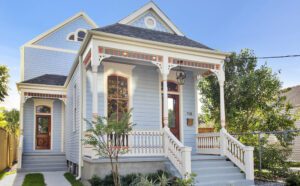Feeling safe and comfortable in your own home – or your loved ones’ homes – is incredibly important. Unfortunately, it can also be somewhat rare for people with disabilities. Many homes were not made with mobility aids or other assistive devices in mind. As a result, many people with disabilities are left feeling slightly unwelcome, even in their own homes.
Fortunately, there’s a lot you can do to transform an inaccessible space into a safe and welcoming environment for all. Adamick Architecture has created this guide to give you some insights into how you can make simple, effective modifications that make your home more accessible. Let’s get started:
Evaluate Your Property
Your first step should be to evaluate your property with accessibility in mind. Take a look at accessible housing guidelines and use them to examine your home’s entryway and floorplan. This is where the most common changes that the average home will need will come up. For example, you may need to install a ramp to make a stairway entrance accessible.
It’s important to know that there are some homes that don’t lend themselves to accessibility. For example, a space with very narrow hallways would need major renovations to be accessible for someone in a wheelchair or other wide mobility device. If that’s the case, you may need to look into buying or building a more accessible property. Take some time to research the New Orleans housing market to get a sense of what’s available and, if there’s nothing on the market that’s quite right for you, a skilled architect can help you design the perfect space.
Make Safety Changes
Whether you’re adapting an existing home or thinking about what you’ll need to add to your designs for a custom build, safety should be the first thing you check off your list. Among the simplest and most effective safety devices you can add to your home are grab bars in the shower. Slips and falls in the shower are relatively common, even among the able-bodied. For people with disabilities, however, these accidents can lead to serious injuries. Grab bars help provide stability and reduce the risk of harm.
Elevation changes can also be risky for people with disabilities. For example, some home floor plans include a small step when going from the kitchen to the living room, or have similar elevation changes between the more public and private parts of the home. Find a way to mark these drops as clearly as possible and, ideally, install a small ramp to make them work with mobility devices.
Make Life Simpler
Once you have safety features in place, you can look to start making changes that will make life easier for people with disabilities in your home. Installing drawers in lower cabinets is a great way to do this since it makes items inside these cabinets accessible without bending or kneeling down. It also gives people who cannot safely reach upper cabinets access to the tools they need in the kitchen.
This is just one example of home renovations that can make your space more adaptive. If you or someone who lives in your home has a disability, work with their medical team to figure out what changes will be best for your home. You can also reach out to other people with the same disability and ask what changes they’ve made to make their space work for them.
Making your home more accessible takes work, but it’s well worth it. Focus on finding ways to make tasks work with your or your loved one’s needs and abilities. In doing so, you can boost independence and make your home a far more welcoming space all at once.
Want to work with Adamick Architecture to create your dream home? Check out our portfolio to see what we can do for you!



